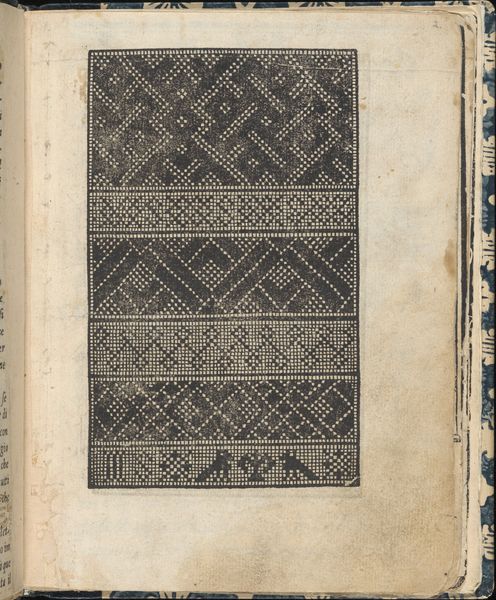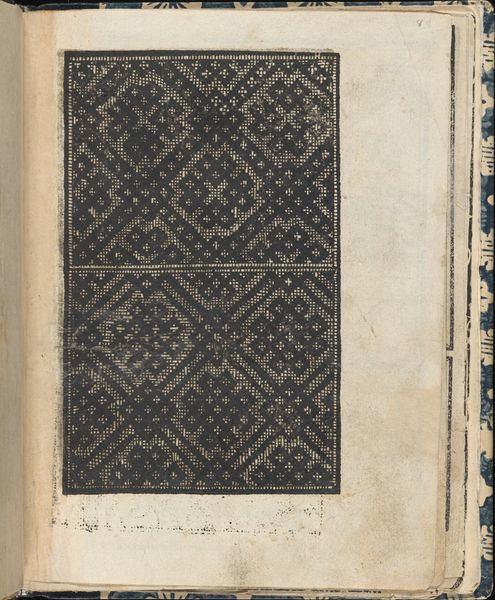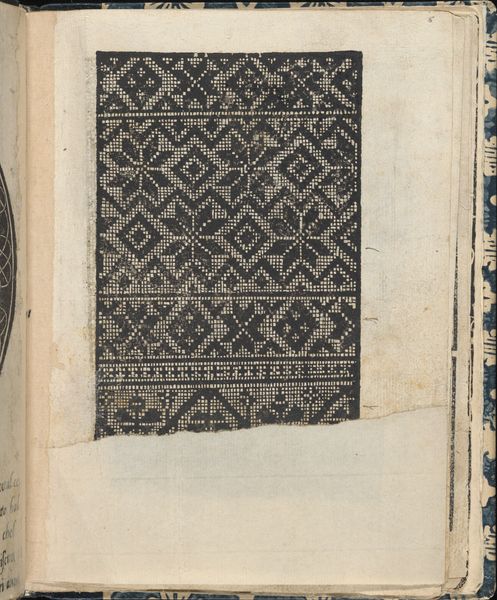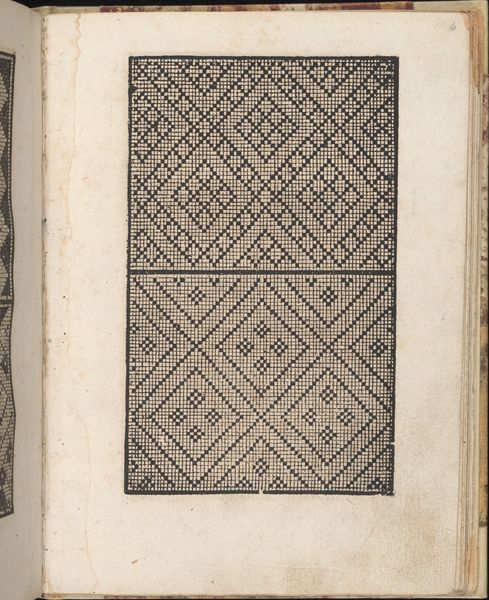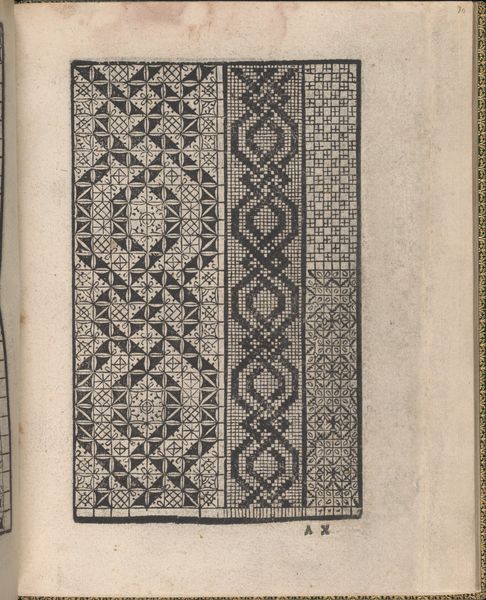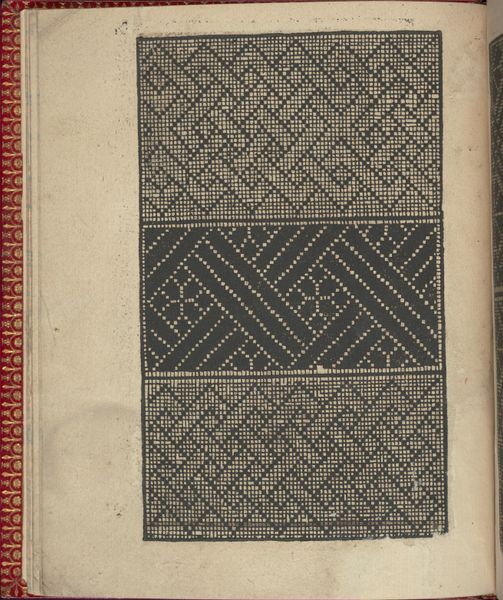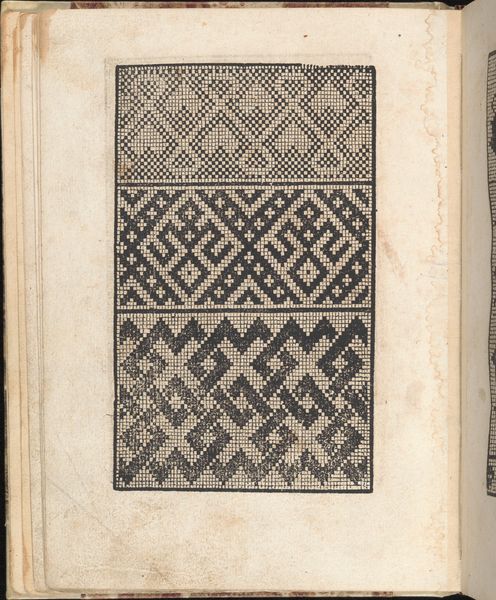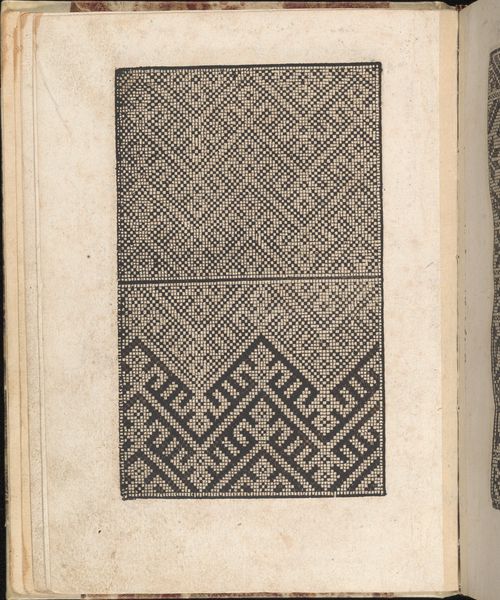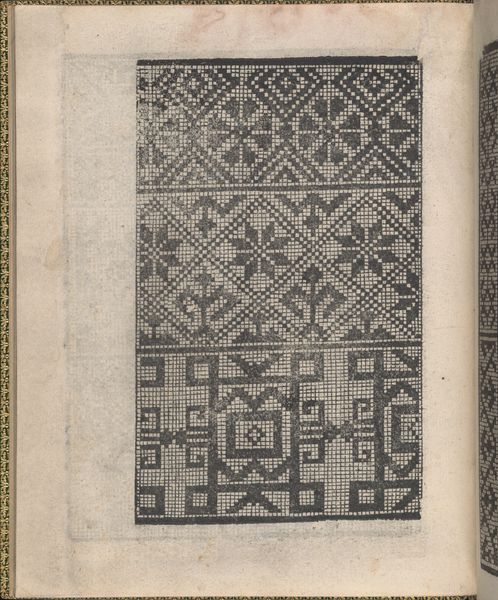
drawing, graphic-art, ornament, print, paper
#
drawing
#
graphic-art
#
ornament
# print
#
book
#
paper
#
italian-renaissance
Dimensions: Overall: 7 13/16 x 6 3/16 x 3/8 in. (19.8 x 15.7 x 1 cm)
Copyright: Public Domain
Curator: Here we have a page from Giovanni Antonio Tagliente’s "Essempio di recammi," printed around 1530. It's currently housed in the collection of the Metropolitan Museum of Art. Editor: The density is remarkable. It feels almost dizzying, like staring into a woven textile, each thread painstakingly rendered. Is it a print or a drawing? Curator: It’s a print, though based on a drawing, of course. Tagliente’s book was part of a larger trend in the 16th century. Printed pattern books democratized access to design, helping spread new aesthetic styles to wider audiences. Editor: Democratization of design… That shifts how we view labor. This wasn't necessarily 'high art'; it was practical, utilitarian even. A guide, you might say, impacting not just visual culture but material production. Curator: Precisely! Consider the impact of printed patterns on the burgeoning textile industries. These books functioned as crucial resources for both amateur and professional needleworkers. The politics of imagery shift when women gain access to visual references in a print like this. Editor: What does this specific page show? Curator: Here we see geometric patterns intended as models for embroidery. Think of the material implications. Each shape translated into stitches, each line requiring tactile skill and manual work. This impacts female work at the time in new and exciting ways! Editor: There is a subtle shift. The design book provides opportunities that create new jobs for women, like never before, due to mass production. I didn't expect such a piece to speak of shifting gendered economies of labor! Curator: That’s where its value lies, beyond mere aesthetic appreciation. These books were tools, instruments of cultural and economic exchange that we need to observe under that same light! Editor: Thank you.
Comments
No comments
Be the first to comment and join the conversation on the ultimate creative platform.
